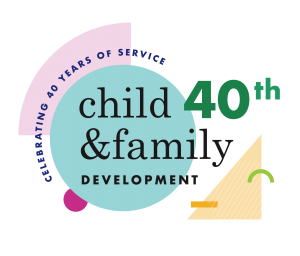By Lindsey Pallas, LPA, Child & Family Development
For many adults, daily life can be stressful and a source of anxiety. When am I supposed to pick up the kids? How much is that going to cost? What are we going to have for dinner? Many times anxiety can be helpful in motivating us to get up and get ready to deal with threats or challenges, such as preparing for a work presentation or running awake from a bear spotted on a hiking trail. Sometimes, though, our brain tricks us into thinking there is “danger” when, in reality, we are safe.
While kids can’t pay bills or chauffeur people around town, they experience stress too! Going to school, giving a class presentation, and the idea of playing on a soccer team are just a few scenarios that may be a source of anxiety for children. As an anxiety-provoking situation may come up, you made notice that your child complains of a headache or stomachache. They may fight you tooth and nail as you are trying to get ready for the event and refuse to participate. Their mind is in “survival mode,” as their brain has tricked them into believing there is danger. If this has happened in your house, you are not alone! Anxiety in children is common and is one of the most easily missed concerns. The good news is that anxiety is treatable, and the most effective treatment for anxiety uses a team approach. Feel helpless no more! You are exactly the “coach” that your child needs to help them be brave and overcome anxiety.
What are the rules of the game?
1. Who makes up the team?
Child = player, Parents = coach, Therapist = assistant to the coach
2. Know the signs.
The first step is to understand what anxiety is and what it looks like. If the team knows anxiety is calling the shots, then the team will know what plays to call to manage it. Signs include:
– increase heart rate
– tense muscles
– headaches
– stomachaches
– looking for danger (hypervigilance)
– wanting to run away/escape
– fear, panic, irritation
– avoiding going into a situation
– clinging to loved ones or seeking others’ reassurance
3. Pay attention to your player.
Parents should observe their child’s anxiety and its antecedents (what happened before the child became anxious), expression of anxiety, and responses by the child and the people around them. Others’ reactions to a child’s anxiety can either help the child manage anxiety appropriately or reinforce the anxiety. Letting a crying child skip a piano recital may make her feel better now, but she may have a harder time performing in front of others in the future. Paying attention to these factors will help parents and others determine which of their own responses to the child’s anxiety are helpful and which were not.
4. Learn and practice the skills.
– Just like sports, kids have to have the right skills to be successful. The team works closely with a therapist to learn strategies to lower anxiety and increase confidence.
– Relaxation skills reduce physiological arousal associated with anxiety.
– Identifying automatic negative thoughts (“I’ll never get through this.”) and replacing them with brave, positive thoughts (“I am brave. This feeling will go away.”).
– Staying in the anxiety-provoking situation. Escaping or avoiding these situations may help now, but the anxiety will still be there (and may be even greater) the next time the child faces this experience.
– practice enduring anxiety-producing situation without using “safety” behaviors, like checking in or seeking reassurance.
– Reward the child for staying in an anxiety-provoking situation
5. Game time.
Now it is time for the team to put the play in action. Working with a therapist, the team will create a “ladder” of feared situations. Having a child face their greatest fear may be too scary for them initially, so stepwise exposure to feared situations is the best approach. Children practice facing the feared situation in a gradual, step-by-step way starting with less frightening scenarios and working their way up the “fear ladder.” With each exposure, the child gets used to the situation more and more, and the anxiety decreases. The child also gets a chance to realize that the terrible thing he imagined could happen doesn’t really come true. Lastly, the child learns that they are brave and can cope with anxiety successfully. Parents can help children in these situations by praising the child’s brave behavior and use of coping skills.
At Child and Family Development, we love working closely with families to find imaginative, creative ways to teach skills and set up gradual exposure exercises, or adventures, as we like to call them. Using puppets, games, or our imaginations help make the experience more fun for kids and families. We love helping children and families gain confidence and step up to the plate to knock their anxiety out of the park!
About the author: Lindsey Pallas is a Licensed Psychological Associate at Child & Family Development. C&FD is a multidisciplinary practice offering diagnostic and therapeutic services to Charlotte area children, adolescents, young adults and their families.
Child & Family Development

Website
Facebook
Instagram
Twitter
Locations:
Mitdtown:
4012 Park Road, Suite 200
Charlotte, NC 28209
704.332.4834
Pineville:
10516 Park Road
Charlotte, NC 28210
704.541.9080



